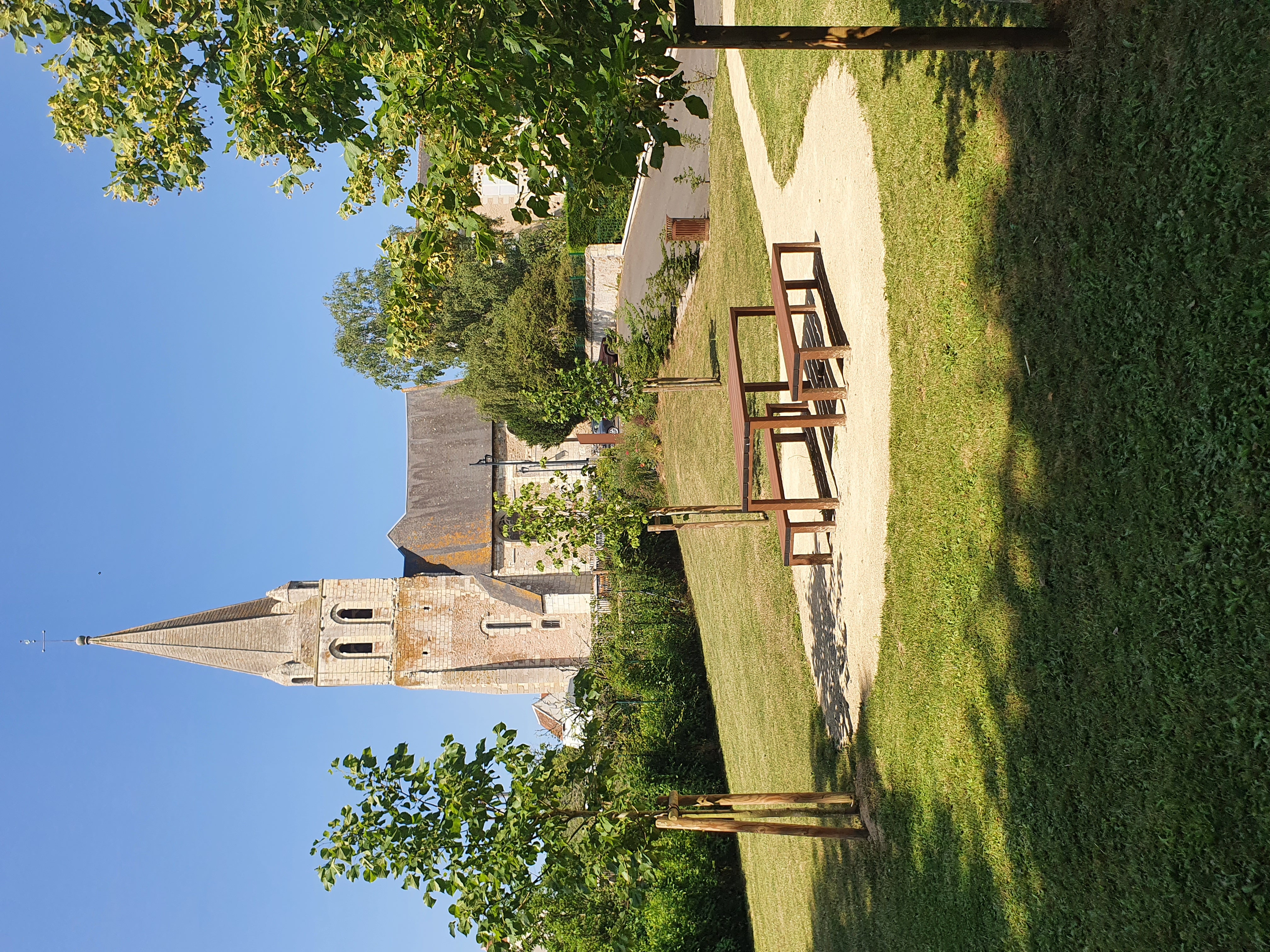Balzacien Hike

Thilouze
Balzacien Hike
Medium
5h
20,4km
+175m
-177m
Loop
Embed this item to access it offline
Attachment
- Downloadpdf
THILOUZE_S_R_RUAN-Sentier-balzacien-2025-IMPR
Credit: Sentier Balzacien - Thilouze - Saché - Pont-de-Ruan - Touraine Vallée de l'Indre
Description
- Church of Saint-Antoine du Désert
The bell tower, listed as a Monument Historique, comprises a base dating back to 1164 and an octagonal stone spire. The 12th-century nave and square ogival choir are illuminated by 12 stained-glass windows from the Lobin workshop in Tours (1871-1872). The exterior wall features 3 carved canonic dials. - Lavoir du Pont de la Boulogne
Located on the Pont Thibault stream, this washhouse may evoke a washerwoman's box. - Panel featuring extracts from Balzac's La Pucelle de Thilouze.
- Old Roman road
Still visible between Pont-de-Ruan and Thilouze, it linked Tours to Poitiers. It is known as the Grand Chemin or Chemin Ferré. - Moulin Rouge wash-house
Located on the Barres stream. - L'Osier
Used for basketry. The Salix Triandra "Noir de Villaines" produced by Saché's wicker makers is recognized as the best in the world. - Château de Saché - Musée Balzac
Place Alexandre Calder (departure from Saché) and Eglise Saint-Martin de Vertou - In Saché, explanatory panels allow you to discover in greater detail the heritage features from n°8 to N°10.
- Tobacco kiln
- La Métairie
- Saint-Martin fountain
An ancient devotional fountain already known to the Gauls, transformed into a drinking trough and washhouse, then used as a watercress plantation in the 20th century. - Cloche d'Or dairy
Established in 1898, this dairy has been called "La Cloche d'Or" since 1923, renowned for the quality of its cheeses. - Auberge de la Corne d'Or
Former 17th-century stopover inn for pilgrims on their way to Santiago de Compostela. - Les Moulins Lambert (departure from Pont-de-Ruan)
The Moulin Lambert was built in 1285. Moulin Gilet produced bread flour until 1959 and ice-cream loaves until 1972. Today, the site is brought back to life thanks to the efforts of a local association. - Chapelle Sainte-Apolline
Patron saint of dental surgeons. - Hexagonal Oratory of the Holy Trinity
Each pilgrim prays and then throws his or her oblong at the foot of the modest altar.
Sacred fountain: on Holy Trinity Sunday, the sick came here in the hope of supernatural healing.
Lavoir: dating from 1907, it retains its fireplace and brick-framed door. - Eglise de la Sainte-Trinité
The original church was founded by Saint Brice in 444 on the foundations of a Roman house. It was rebuilt in the 11th century, after the Norman incursions. - Saint-Michel Cross
Iron cross. - Vineyard lodge
Relocated here in 2004, it provided a sheltered place for farmers to eat and rest. - Saint-Charles or Gibault cross
Erected in 1928 for Saint-Roch's Day, the solemn feast of the Saint-Roch association, a mutual assistance society for farmers in Thilouze, under the patronage of Saint-Roch (stained-glass window in the church). - Pont du Bourg public washhouse
Built in 1885 on the Pont-Thibault stream, near the home of cobbler Lenay, to whom Balzac used to walk from Saché to have his shoes repaired.
- Departure : Thilouze - Espace Saint-Antoine
- Arrival : Thilouze - Espace Saint-Antoine
- Towns crossed : Thilouze, Saché, and Pont-de-Ruan
Forecast
Altimetric profile
Information desks
4 Rue du Château, 37190 Azay-le-Rideau
Rd 910, 37250 Montbazon
Report a problem or an error
If you have found an error on this page or if you have noticed any problems during your hike, please report them to us here: